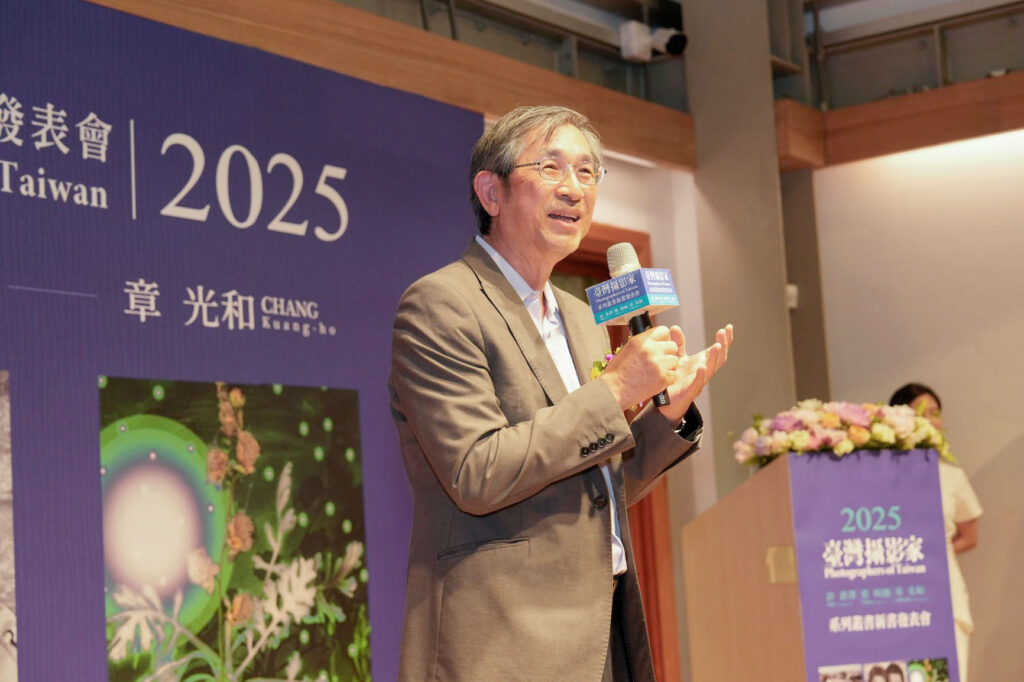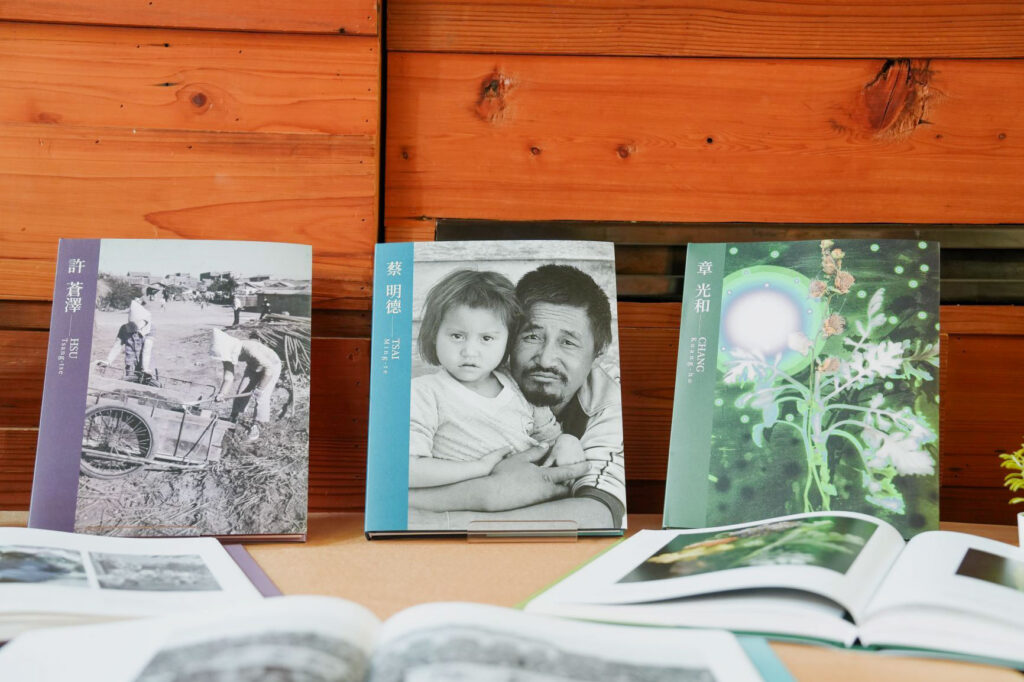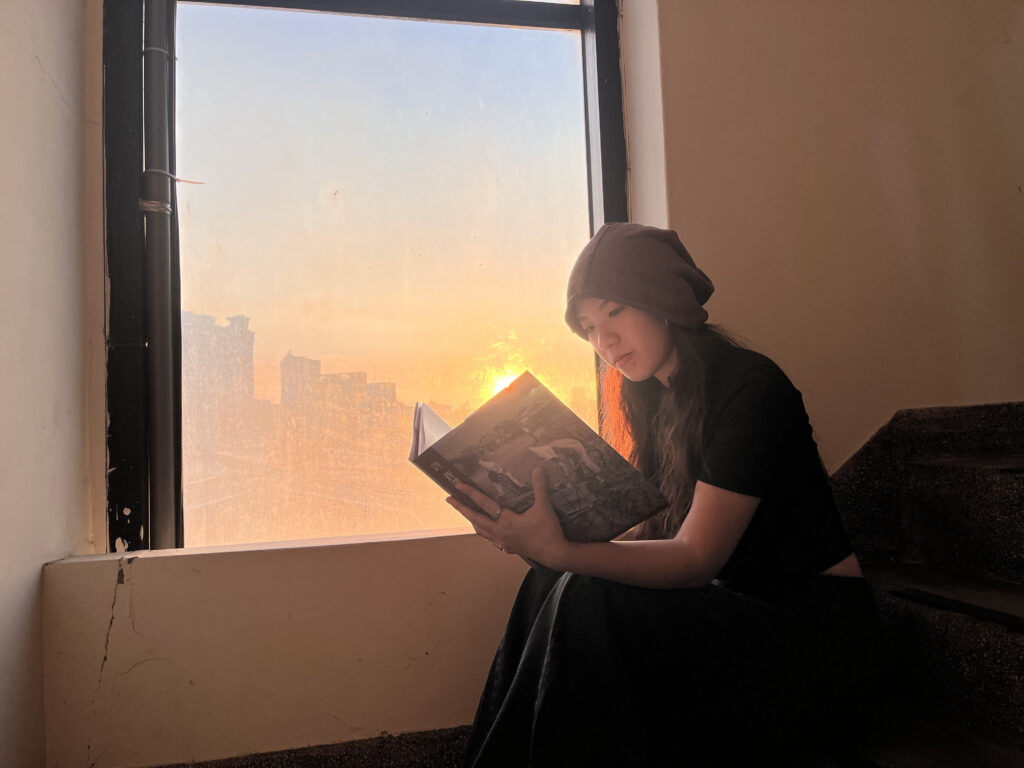Mapping the Island with Light and Shadow:
4/18 ꜰʀɪ.・Highlights from the “Taiwan Photographers” Series Book Launch
“My father was a man who kept a diary with his camera. For him, photography was life, and his lens captured the breath of daily existence.” At the book launch, Dr. Hsu Cheng-yuan, son of photographer Hsu Tsang-tse, spoke on his father’s behalf, warmly outlining the core of his creative spirit. This affectionate, in-depth gaze at the multifaceted life of Lukang’s streets is now presented to the public in a comprehensive and systematic manner through “Hsu Tsang-tse”, the eighth volume of the “Taiwan Photographers” series, co-published by the National Taiwan Museum of Fine Arts and the National Center of Photography and Cinematography.
Launched in 2016, the “Taiwan Photographers” series serves as more than just a creative biography of local photographers. It weaves together photographic narratives that reflect their historical context, thereby contributing to a more complete and diverse understanding of Taiwan’s photographic image history. The book launch brought together a diverse group of contributors. In addition to photographers, their families, editorial committee members, and institutional representatives, we were honored to welcome Mr. Chen Shi-hsien, a long-standing and deeply respected figure in Lukang’s cultural and historical preservation, as a distinguished guest. As the team responsible for the restoration and adaptive reuse of Hsu Tsang-tse’s former residence, the “Changyuan Hospital – Lukang Historic Image Museum”, X-Basic Planning was honored to be invited. The event provided a valuable opportunity to witness the meticulous cross-disciplinary dialogue among institutions, experts, and family members in interpreting Mr. Hsu Tsang-tse’s original works.


A Chronicle in Light and Shadow
Throughout the history of photography in Taiwan, its style has transformed multiple times in just a few decades. It evolved from the Pictorialism of the Japanese Rule Period to Straight Photography and Photojournalism, influenced by global trends, and later diversified under the impact of post-war social and political changes. During the 1960s, when Mr. Hsu Tsang-tse was actively publishing, Taiwan’s local arts scene was conservative due to the martial law era. “Salon Photography”, with its emphasis on beautiful compositions and aesthetic concepts, was the prevailing style, serving as a form of spiritual solace for many creators.
In contrast to the prevailing aesthetic of salon photography, Mr. Hsu Tsang-tse chose to focus his lens on the land and the life he deeply loved. Deeply moved by the traditional character of his hometown, Lukang, and the simple beauty of the local landscape – both of which were fading with time – he used film to document the island’s memories. He ventured into often-overlooked settings like historic houses in Ancient Town, farming villages, and wharves, repeatedly capturing these vanishing scenes from a perspective grounded in the land. His work does not seek meticulously calculated, perfect compositions; instead, it strives to preserve the casual, life-filled, and fleeting moments of daily existence. While these images may appear complex and unordered, their inner warmth leaves behind a visual archive of profound depth, breadth, and sincerity.
Edited by Chang Mei-ling, Chairwoman of the Taiwan Cultural Heritage of Photography Association, the monograph “Hsu Tsang-tse” categorizes his over 117,000 digitized images into five main themes: “Public Space of Daily Life”, “Work in Progress”, “Place of Labor”, “Red Brick, Old Mortar”, and “Lukang’s Red-Brick Historic Houses”. This thematic approach, guided by extensive research and interpretation, seeks to explore Mr. Hsu Tsang-tse’s creative thought process. To this end, Chairwoman Chang Mei-ling conducted multiple interviews with Dr. Hsu Cheng-yuan, delving deep to unearth hidden stories. Through this process of reflection and organization, Dr. Hsu developed a more profound understanding of and connection to his father’s creative work.
From Image to Site Activation
Question: “Excuse me, did you ever ask Mr. Hsu back then why he took so many pictures?”
HHsu Shih Hsiu-hsiang (wife of photographer Hsu Tsang-tse): “He didn’t say much, just this: You’ll understand in the future”.
Excerpt from the monograph “Hsu Tsang-tse”
According to his family, photographer Hsu Tsang-tse was a man who spoke more eloquently through images than words. The brief conversation from that memory has now blossomed into a vast sky of images, its truth realized over the decades that followed. As historic streets and old houses were dismantled and rebuilt over time, and the old ways of life faded, the images left by Hsu Tsang-tse became irreplaceable historical evidence, telling the stories of a Lukang that once was.
This profound understanding of his vision led to the National Taiwan Museum of Natural Science being entrusted with the entire photographic collection of Mr. Hsu Tsang-tse after the “Cultural Heritage” concept was implemented in 2008. This not only ensured the proper preservation and study of these invaluable records but also indirectly led to the creation of the monograph, “Taiwan Photographers: Hsu Tsang-tse”. For X-Basic Planning, the historical images organized by Dr. Hsu proved invaluable to the Changyuan Hospital restoration project, extending beyond artistic or academic interest. Through Hsu Tsang-tse’s lens, we glimpse the early years of this century-old house, the modest Chen family building, and the surrounding street life. These images reveal a detailed atmosphere that is difficult to fully replicate in an exhibition, while also suggesting how the old house might be restored to its place in collective memory.
Mr. Hsu Tsang-tse dedicated his life to creating the most profound photographic diary of Lukang. This deep affection for the land is still palpable between the lines of “Taiwan Photographers: Hsu Tsang-tse”. This book features a selection of rarely seen photographic images from the past. Through the research and interpretation of Chairwoman Chang Mei-ling and other scholars, Hsu Tsang-tse’s creative journey is laid bare, inviting more people into the world of this realist photographer and helping them discover the connection between historic Lukang’s Ancient Town and the island of Taiwan.



Book Information
Taiwan Photographers: Hsu Tsang-tse – GPI・Government Publications Information Network
